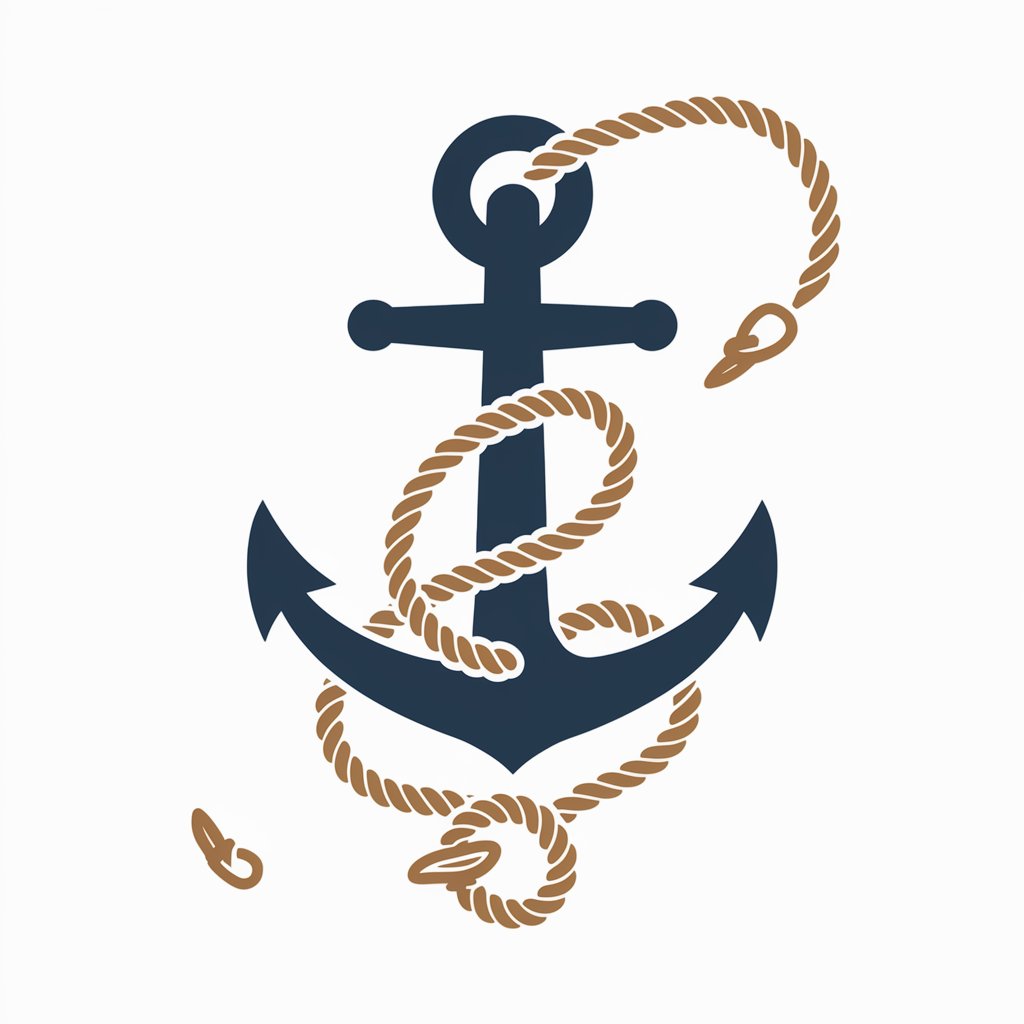Ropes - Expert Rope Guidance

Hello! Ready to dive into the world of ropes and knots?
Unraveling Rope Secrets with AI
Can you tell me about the different types of rope materials?
How do I tie a bowline knot and what is it used for?
What's the best rope for outdoor survival situations?
How can I properly maintain and store my boating lines?
Get Embed Code
Understanding Ropes: An Essential Guide
At its core, the concept of Ropes pertains to flexible, strong lines created by twisting or braiding multiple strands of material such as hemp, nylon, polypropylene, or polyester. Designed for versatility, ropes serve a multitude of functions across various domains including boating, climbing, construction, and survival situations. A rope's design purpose is to leverage strength, durability, and flexibility, enabling it to withstand tension, bear loads, and secure items or structures effectively. Examples illustrating the significance of ropes include securing sails to the masts in sailing, rappelling down steep terrains in climbing, and creating shelters or snares in survival scenarios. Each use case exploits the rope's inherent properties for specific outcomes, like the use of dynamic ropes in climbing for their elasticity to absorb the energy of falls, or the selection of static ropes in rescue operations for their lack of stretch, ensuring stability and safety. Powered by ChatGPT-4o。

Core Functions of Ropes and Their Applications
Load Bearing
Example
Climbing ropes
Scenario
Used in mountain climbing to bear the weight of climbers, protecting them against falls by absorbing shock through elasticity.
Securing and Tying
Example
Mooring lines
Scenario
Employed in boating to secure vessels to docks or other anchors, preventing them from drifting due to currents or wind.
Towing and Rescue
Example
Tow ropes
Scenario
Utilized in rescue operations or vehicle recovery, designed to pull heavy loads or vehicles out of precarious situations.
Pulley Systems
Example
Rigging in construction
Scenario
Used in construction to create pulley systems that lift, lower, or move heavy materials vertically or horizontally, demonstrating mechanical advantage.
Survival and Crafting
Example
Paracord bracelets
Scenario
In survival situations, ropes like paracords are woven into bracelets, providing a compact, portable solution for crafting tools, shelters, or snares.
Ideal Users of Ropes Services
Outdoor Enthusiasts and Climbers
Individuals engaged in climbing, hiking, or camping benefit from ropes for safety, navigation, and constructing temporary shelters or emergency equipment.
Boaters and Marine Professionals
This group relies on specialized marine ropes for docking, anchoring, and rigging sails, where strength, durability, and resistance to water and UV light are crucial.
Rescue and Emergency Services
Professionals in firefighting, mountain rescue, and coast guard operations use ropes for rescue, evacuation, and accessing difficult terrains safely.
Construction and Rigging Workers
These users depend on ropes for lifting, moving, and securing loads, requiring ropes that provide high tensile strength and reliability in industrial environments.
Survivalists and Preppers
Individuals preparing for survival scenarios value ropes for their versatility in crafting tools, building shelters, and procuring food, emphasizing compactness and multifunctionality.

How to Utilize Ropes Effectively
Begin Exploration
Start your journey at yeschat.ai for a hassle-free trial, requiring no login or ChatGPT Plus subscription.
Identify Your Needs
Determine the specific task at hand, whether it's boating, survival, or household use, to select the appropriate type of rope.
Learn Knot Techniques
Familiarize yourself with various knot types through tutorials or guides, focusing on those most relevant to your application.
Practice Regularly
Enhance your proficiency with ropes by regularly practicing knot tying, maintenance, and safety procedures.
Apply Knowledge
Utilize ropes in real-world scenarios, applying your knowledge to solve practical problems or enhance your activities.
Try other advanced and practical GPTs
Arctic
Explore the Arctic through AI

Window Repair
Empowering your window repairs with AI

Whiskey
Savor the world of whiskey, powered by AI

Employee
Empowering Employment Insights with AI

Data
Harness AI for Smart Data Management

Handyman
Empower your repairs with AI assistance.

Stickers
Empowering creativity with AI-driven sticker design

Foreign Markets
Empower Your Investments with AI

Pandemic
Empowering health decisions with AI

Skiing
Elevate Your Slopes Experience with AI

Cosmology
Unraveling the Universe with AI

Fyrebyrd
Empowering Leadership Excellence with AI

Frequently Asked Questions About Ropes
What are the different types of ropes used in boating?
Boating ropes vary, including dynamic ropes for elasticity under load, static ropes for anchoring, and specialized ropes like dock lines and towing ropes, each designed for specific maritime tasks.
How do I choose the right rope for climbing?
Select climbing ropes based on diameter, length, and type (dynamic or static), considering your climbing style, rope durability, and safety ratings.
What are the best knots for survival situations?
Essential survival knots include the bowline for creating a loop that won’t tighten, the taut-line hitch for adjustable tension, and the square knot for joining two rope ends securely.
Can you explain the importance of rope maintenance?
Rope maintenance is crucial for safety and longevity. Regularly inspect for wear, clean according to the manufacturer’s instructions, and store properly to prevent damage.
What materials are ropes typically made from, and how does it affect their use?
Ropes are made from various materials, including nylon for elasticity and shock absorption, polyester for UV resistance and durability, and natural fibers for traditional uses with a focus on environmental sustainability. Material choice affects strength, flexibility, and suitability for specific tasks.
